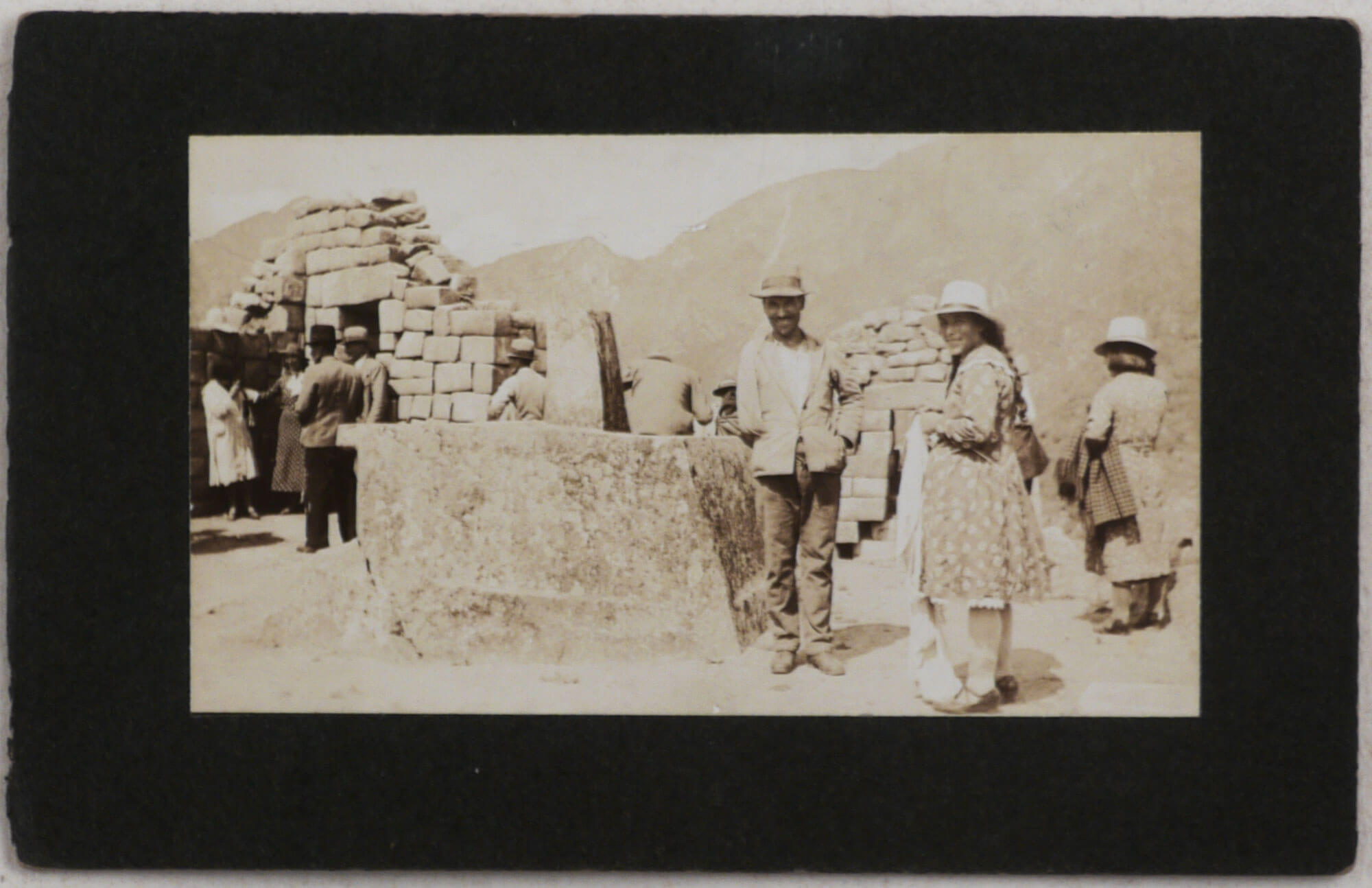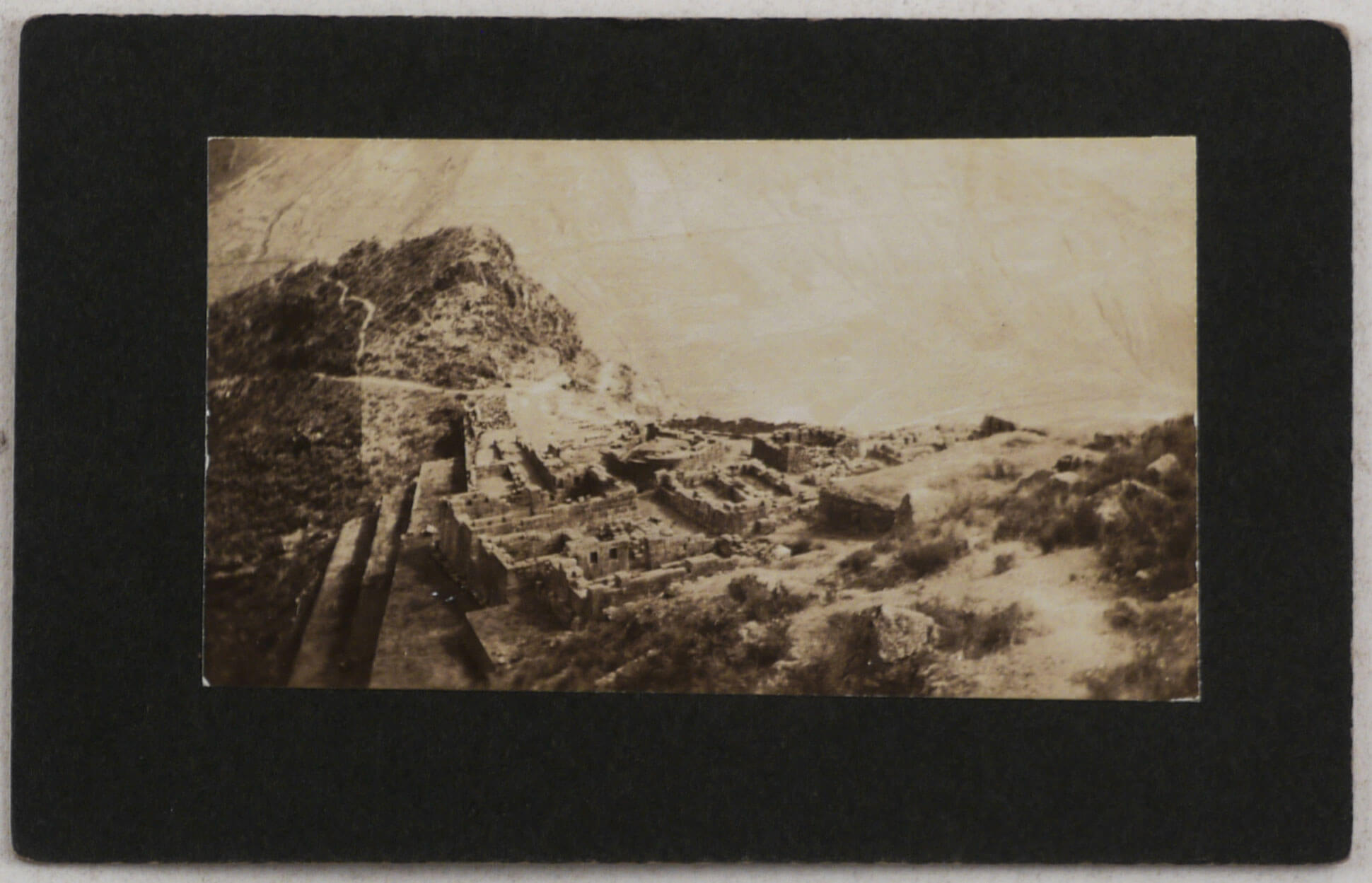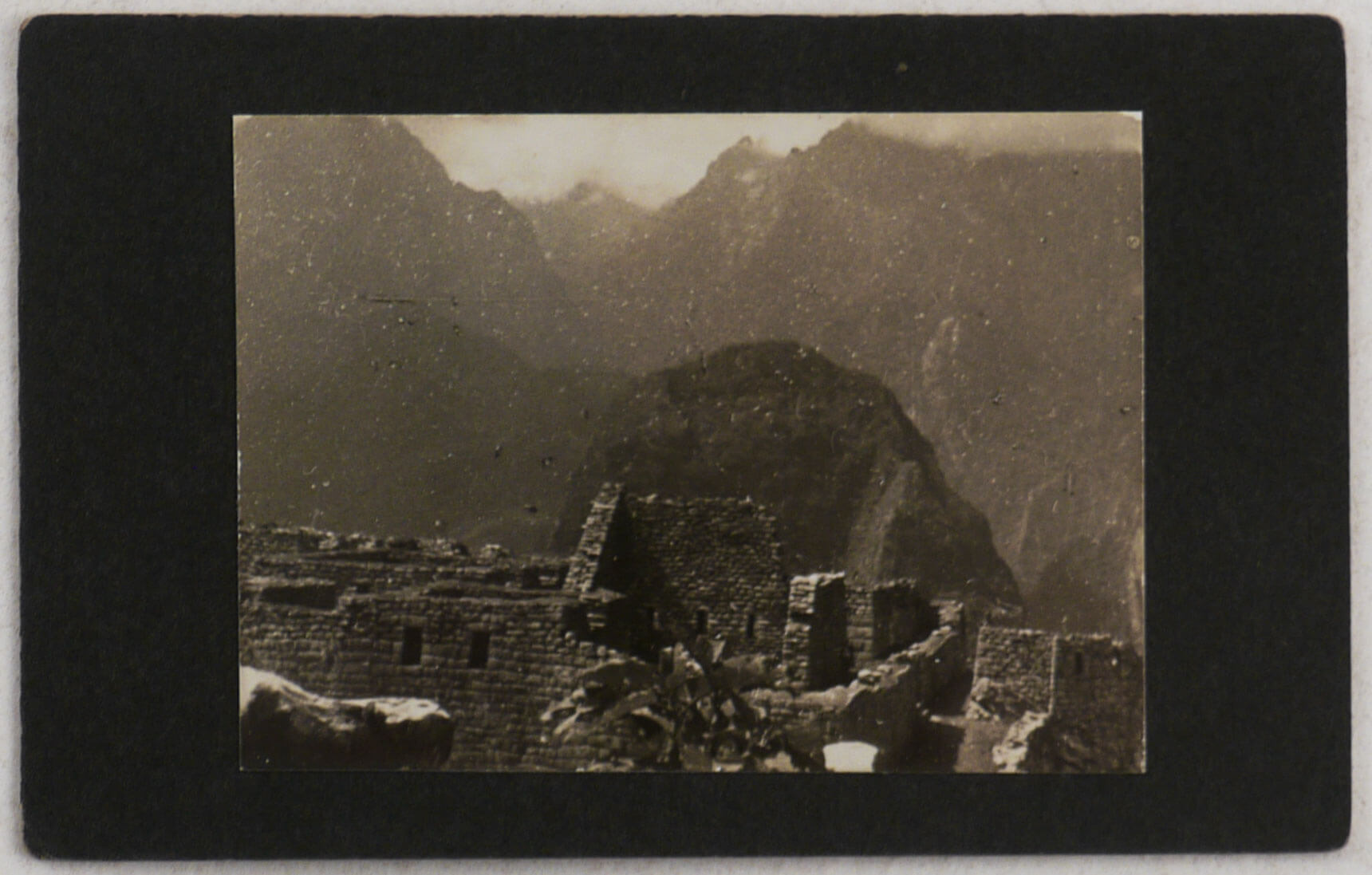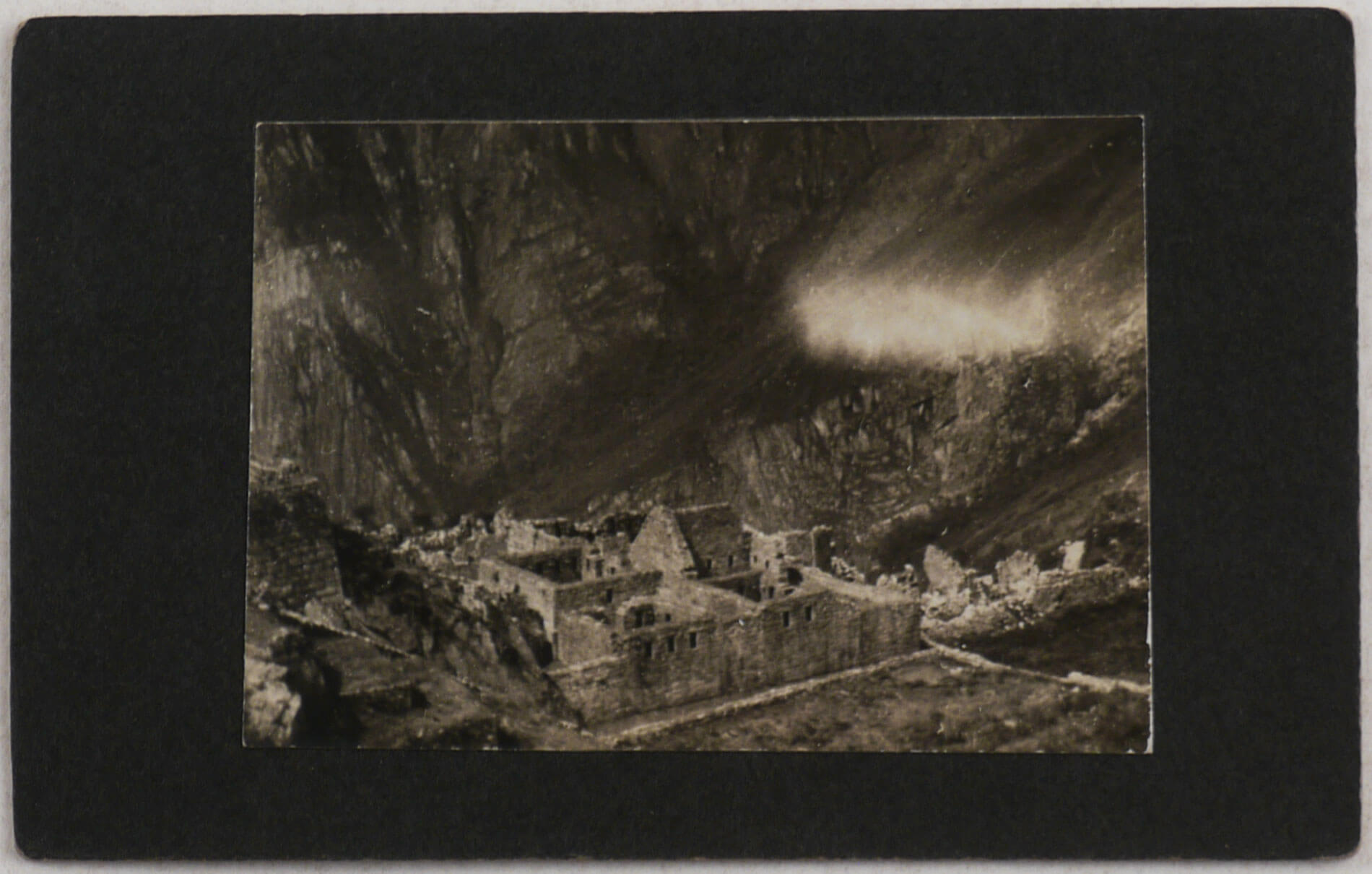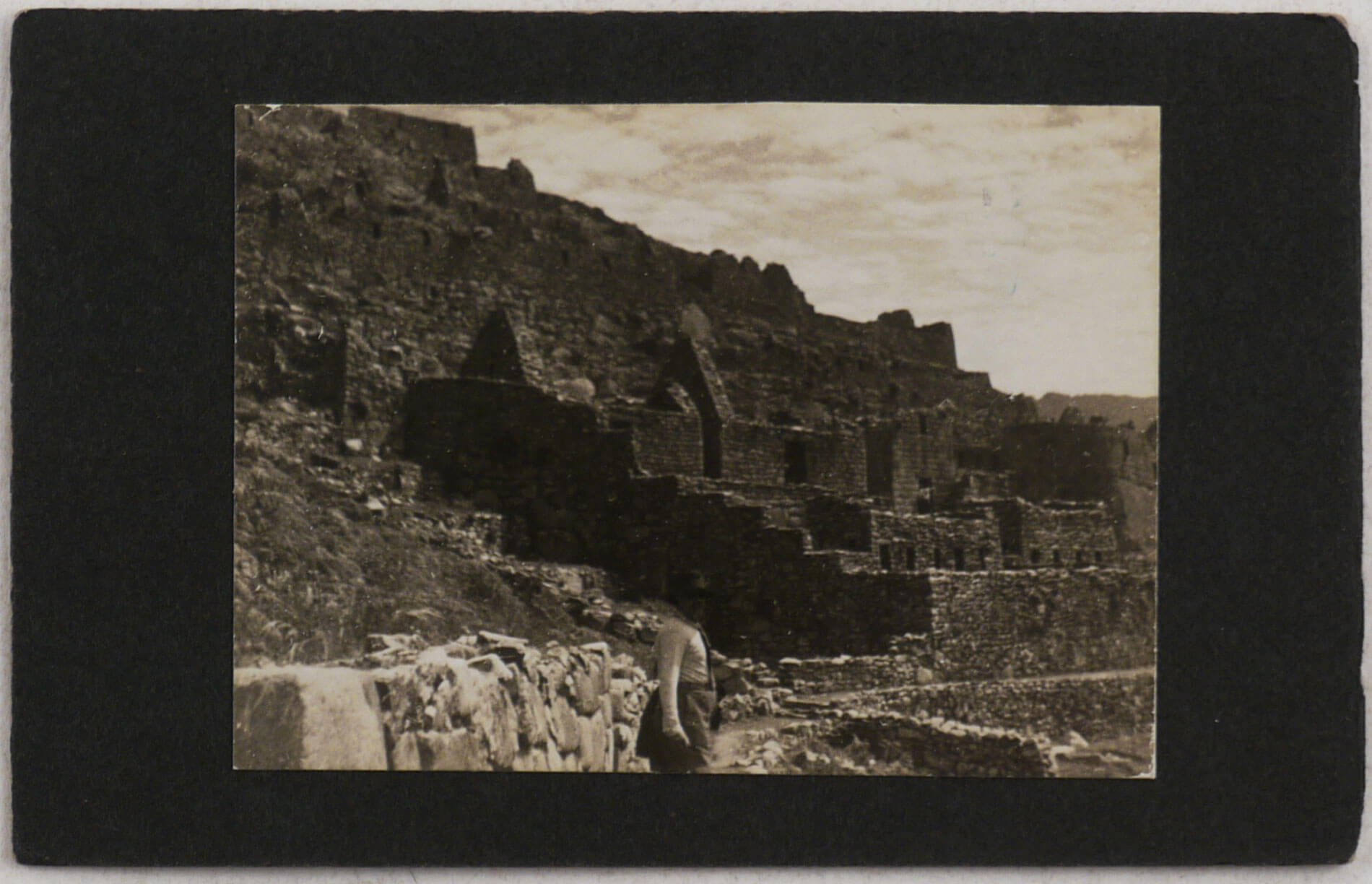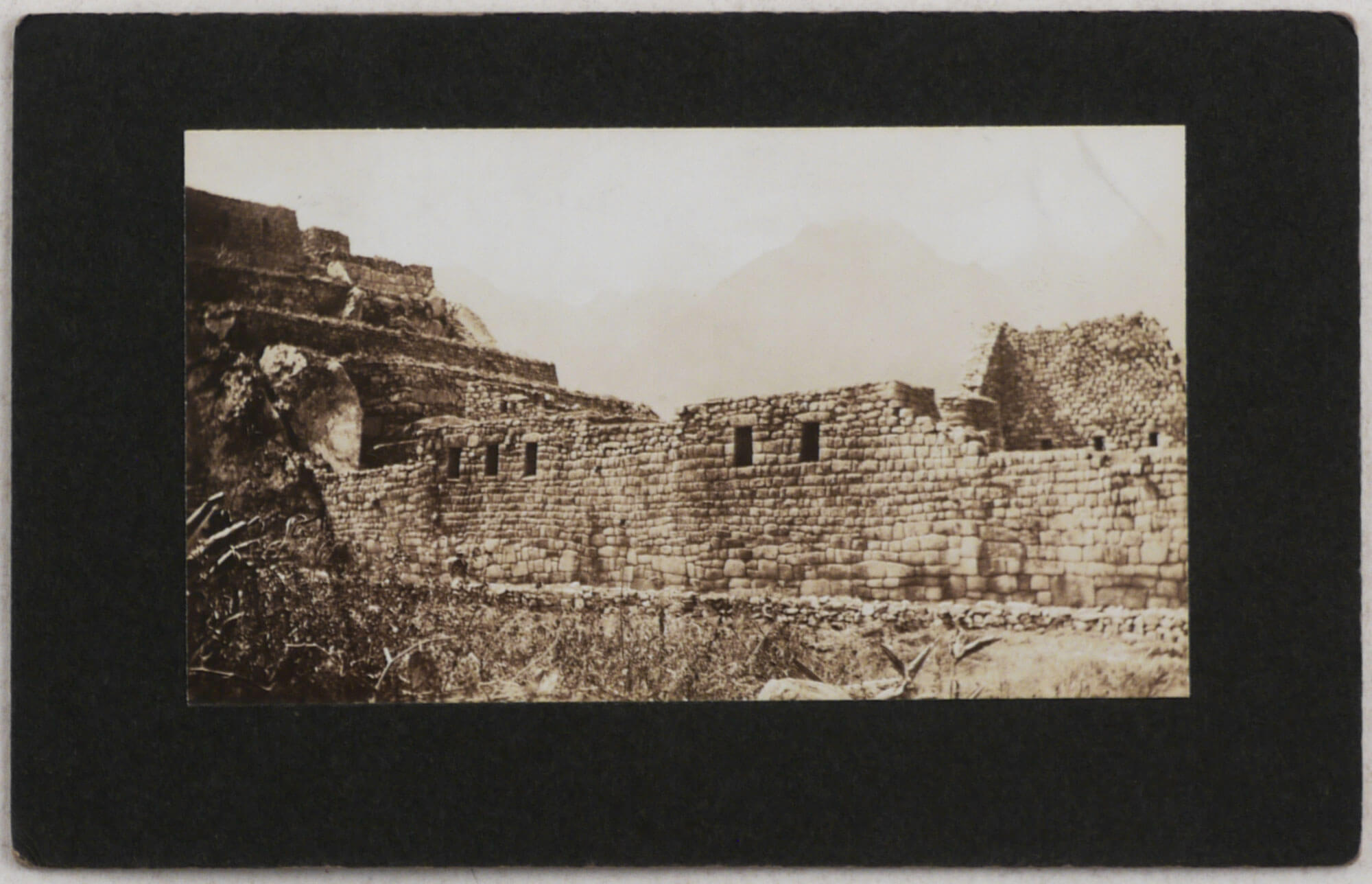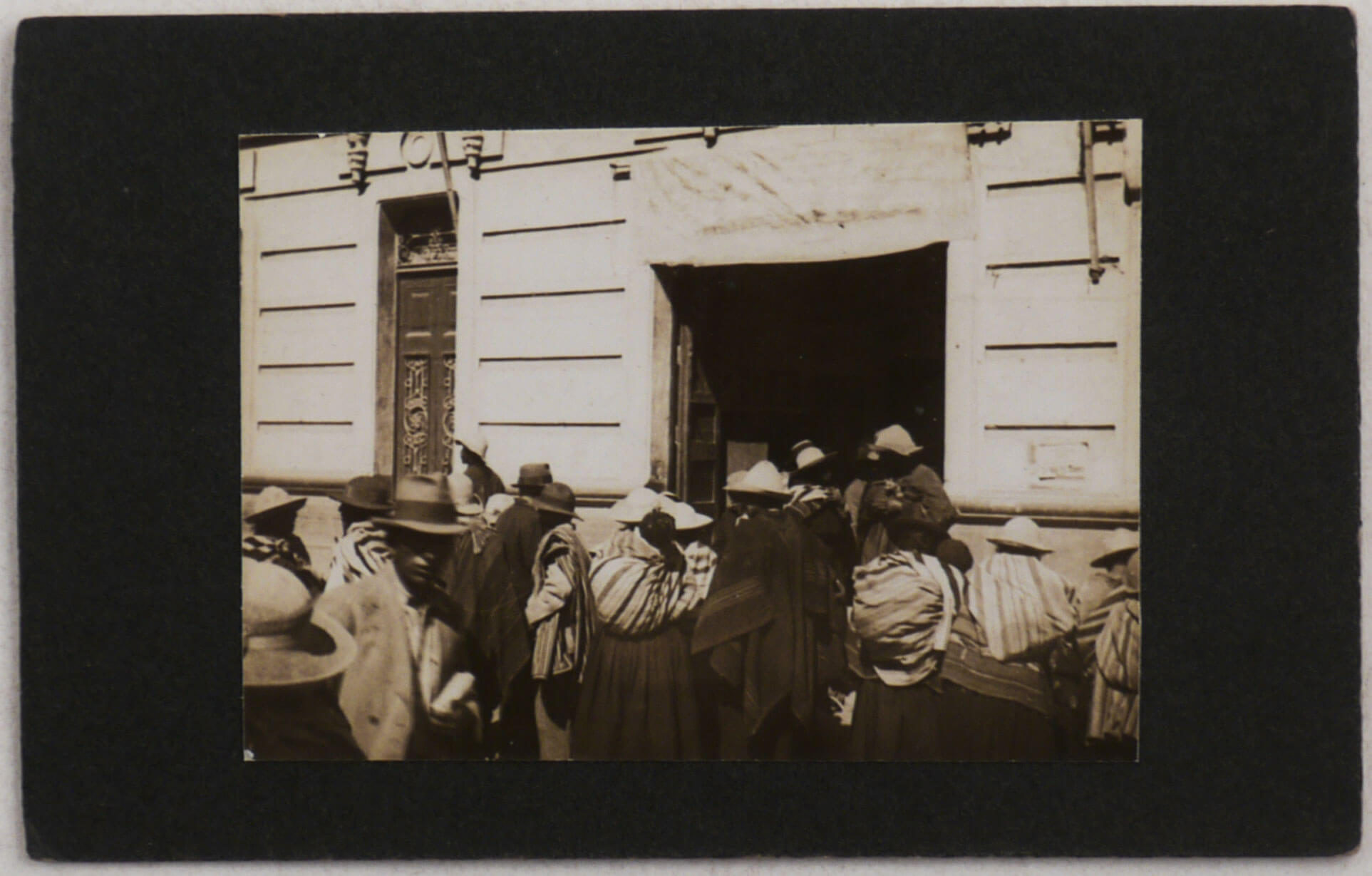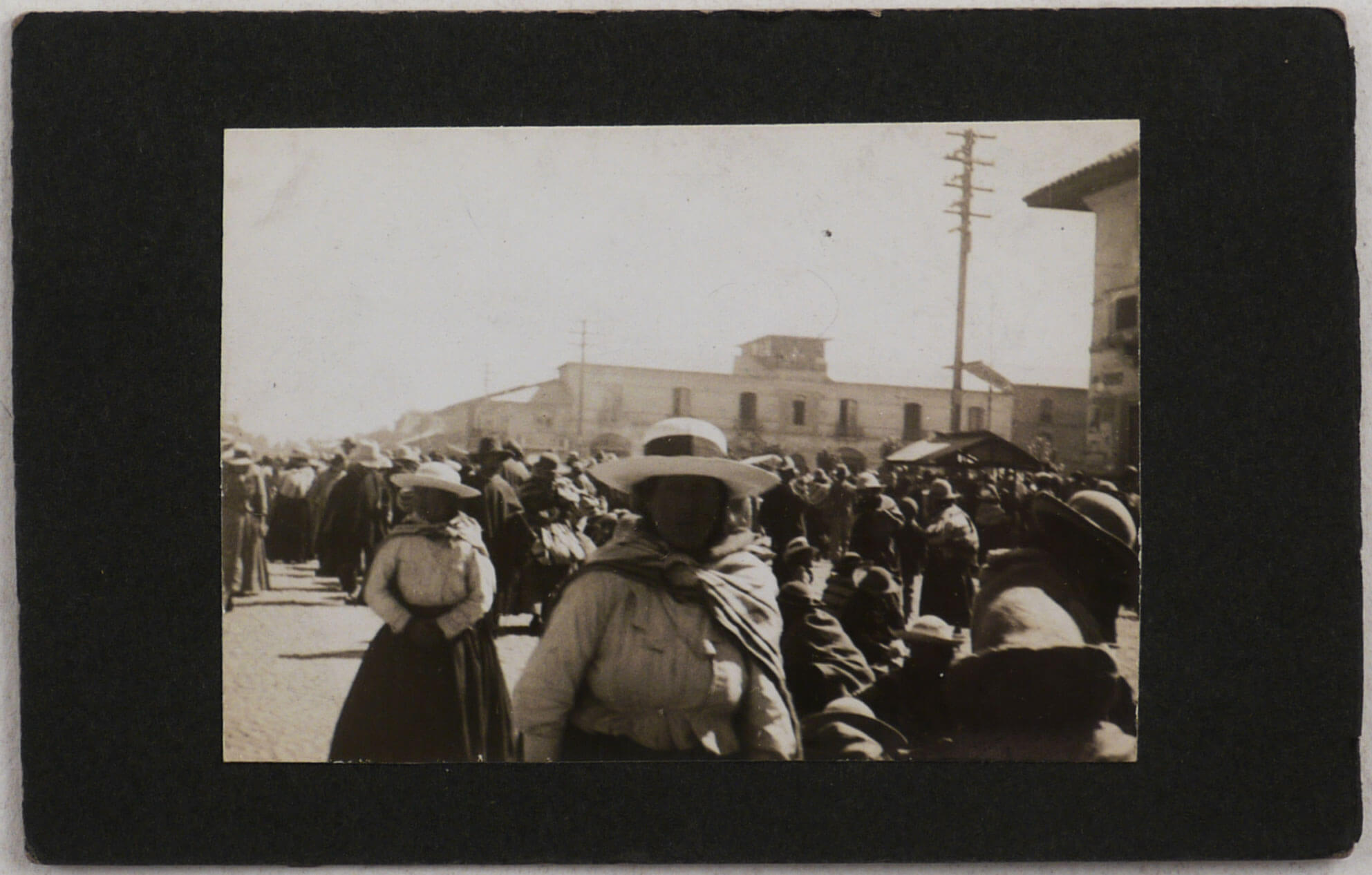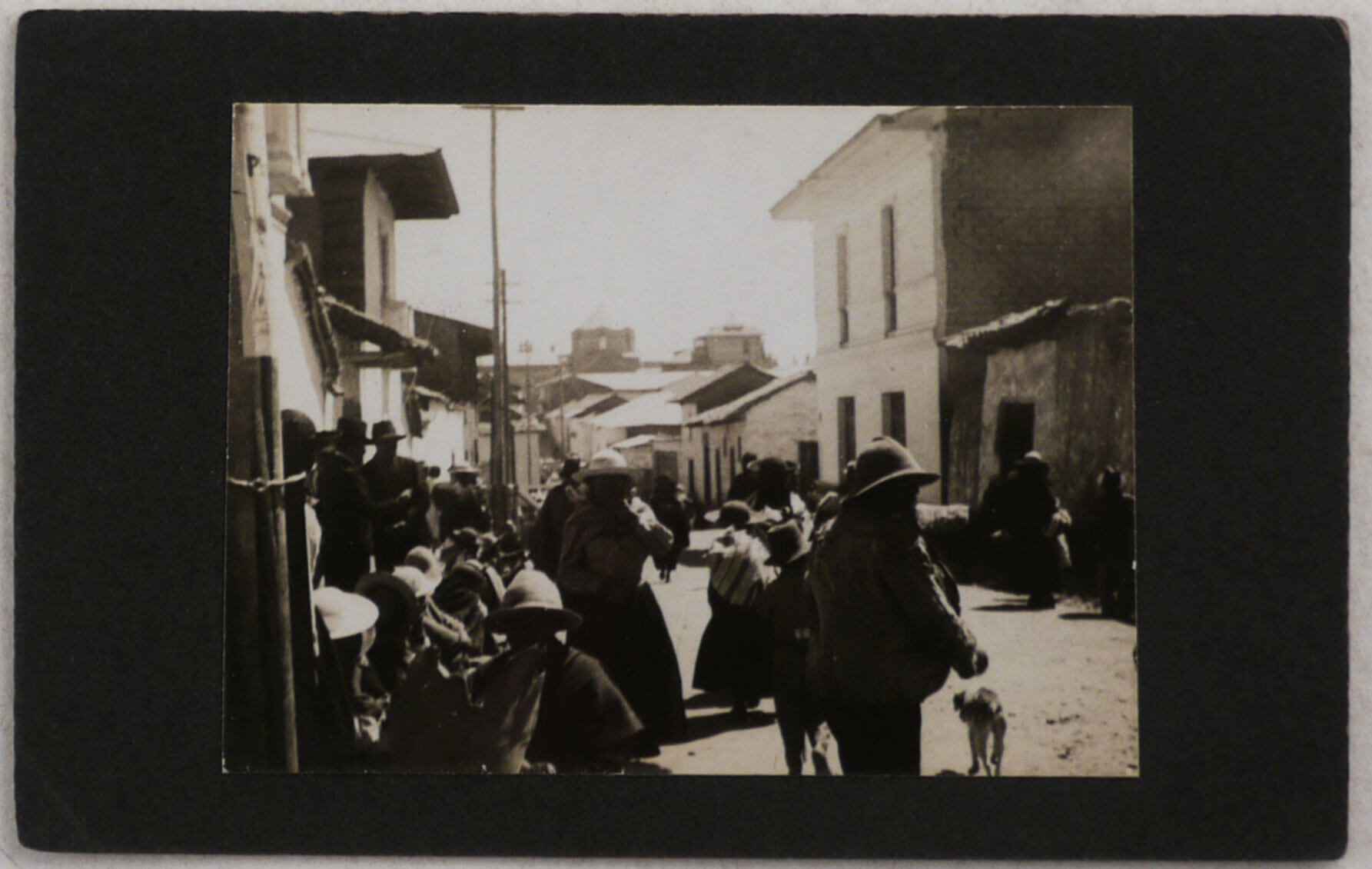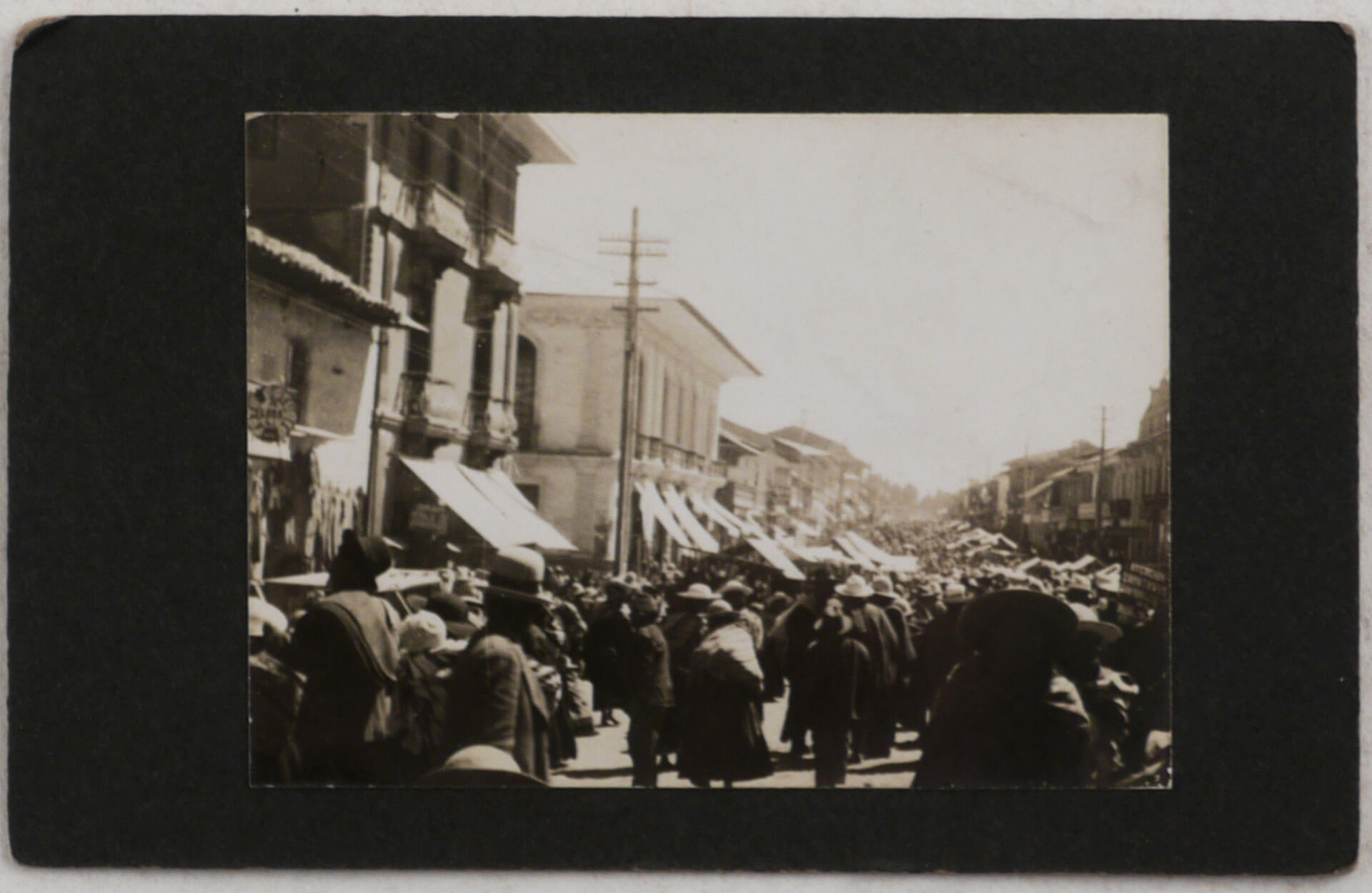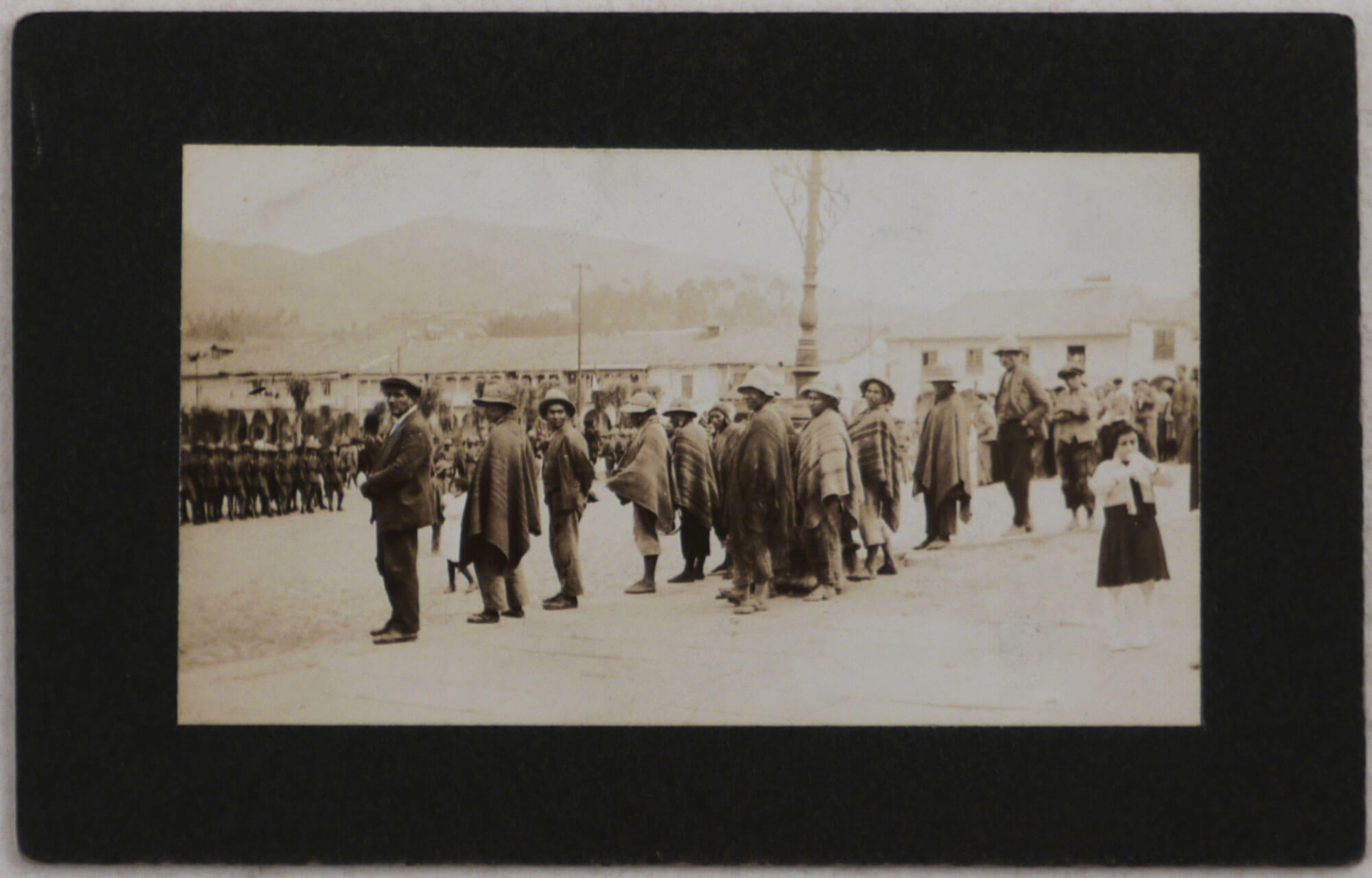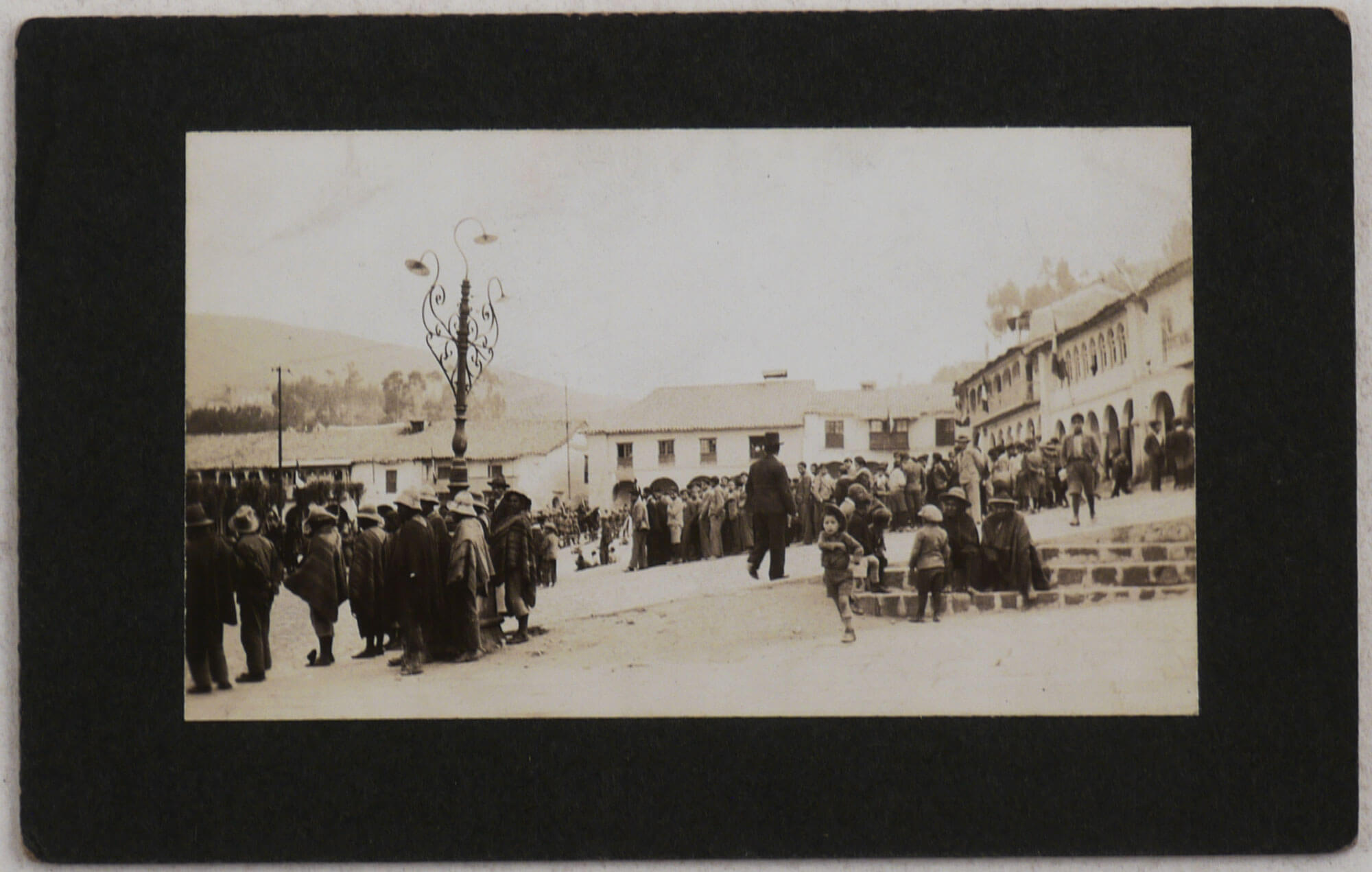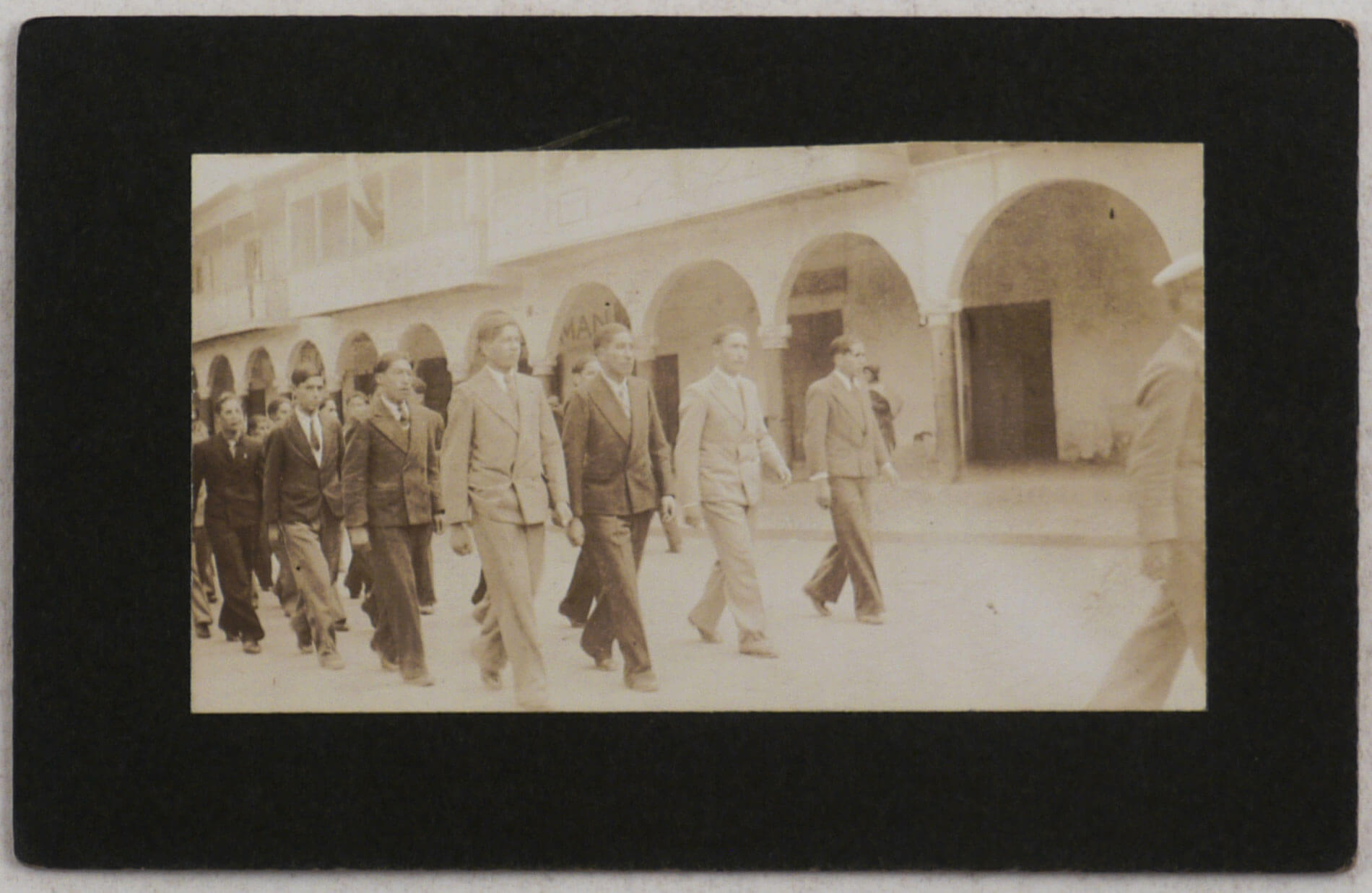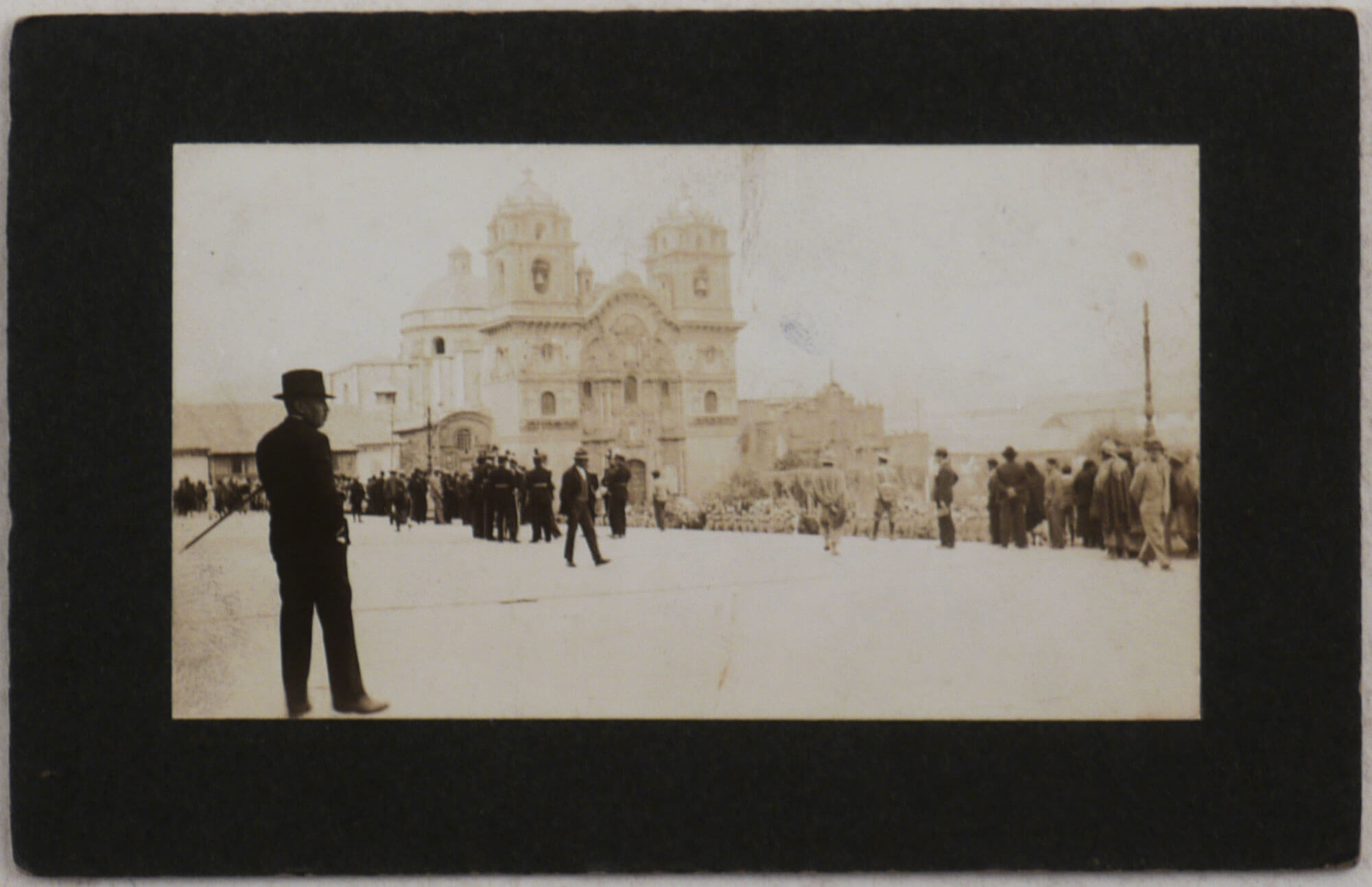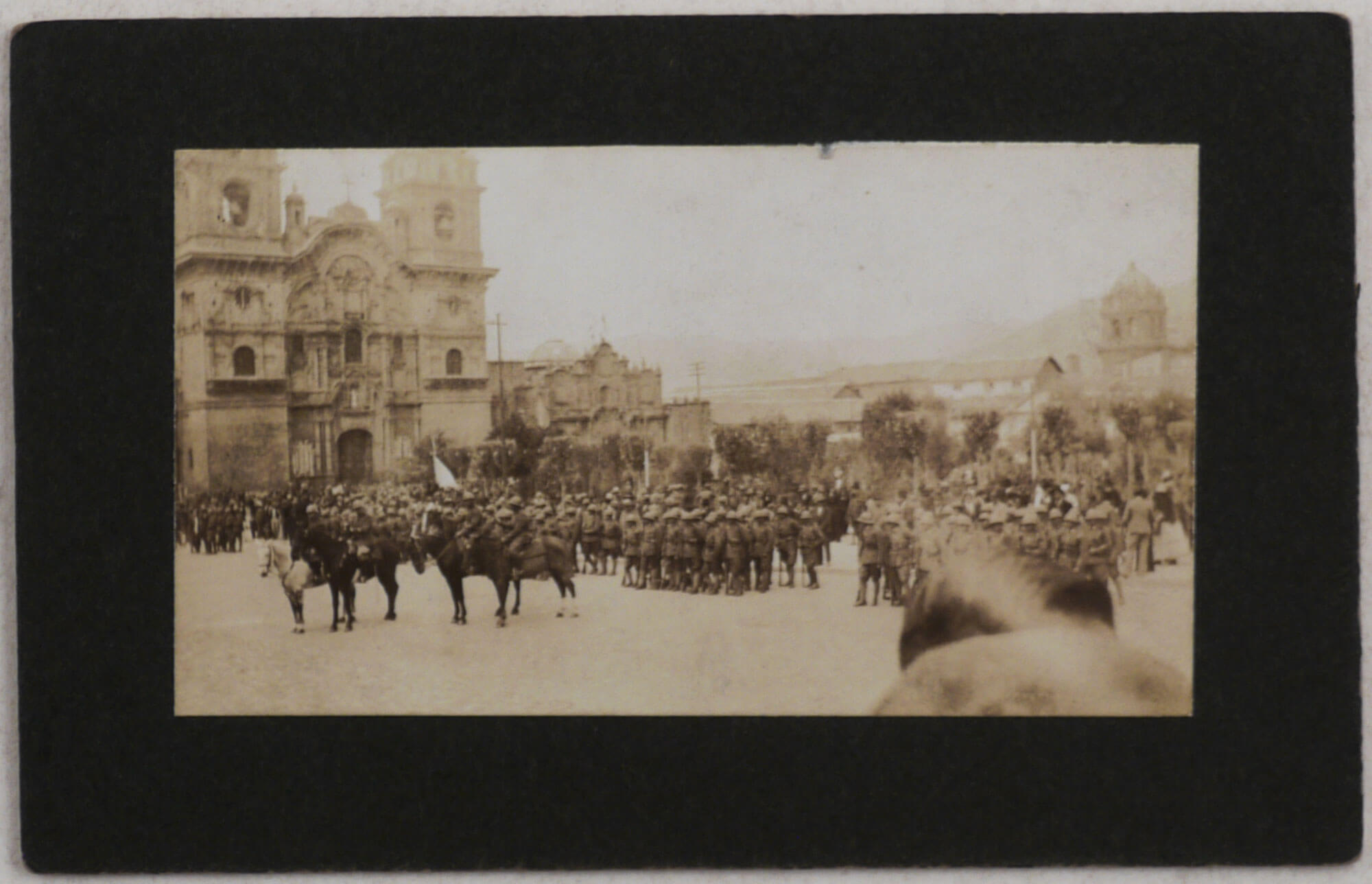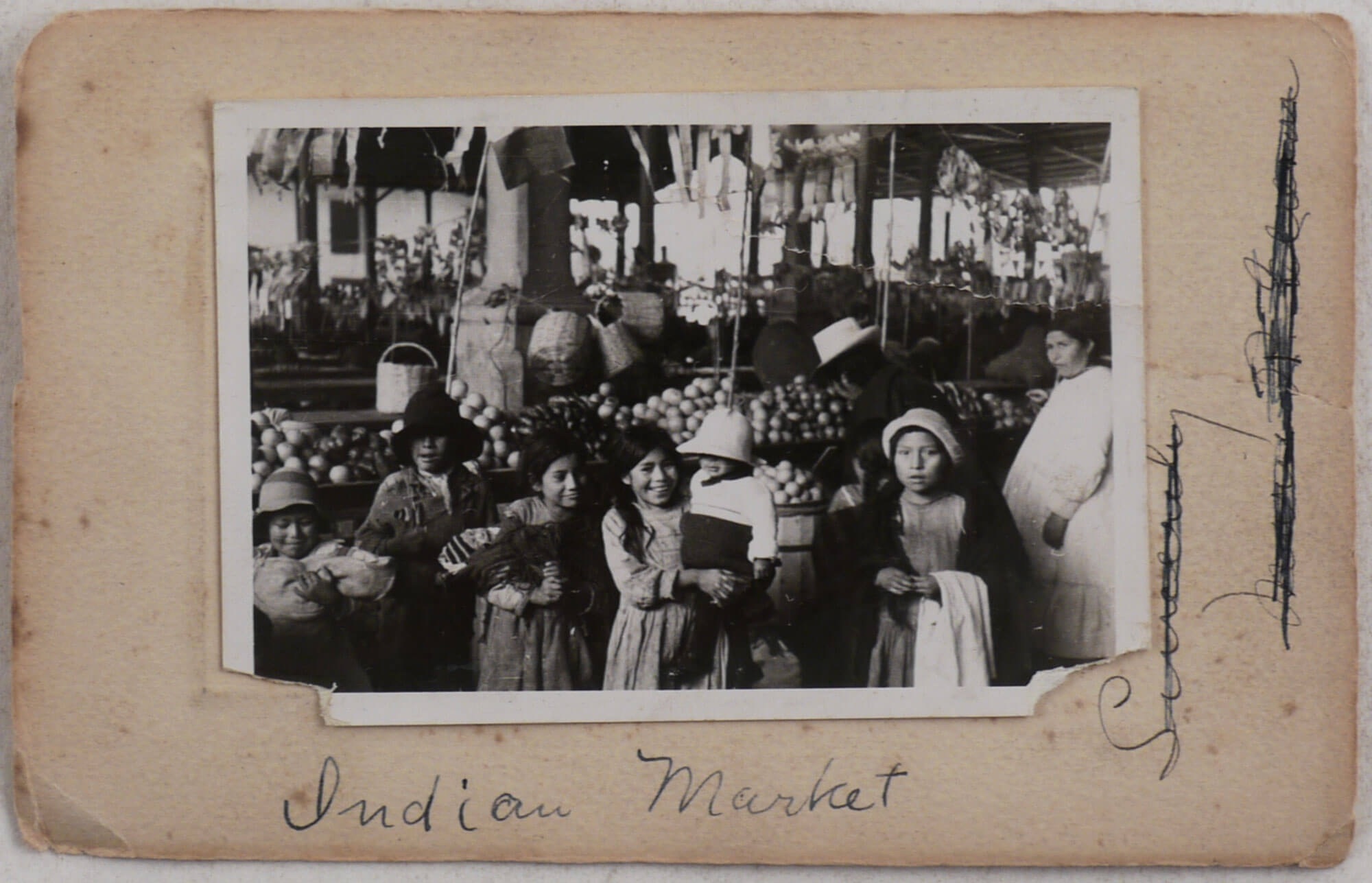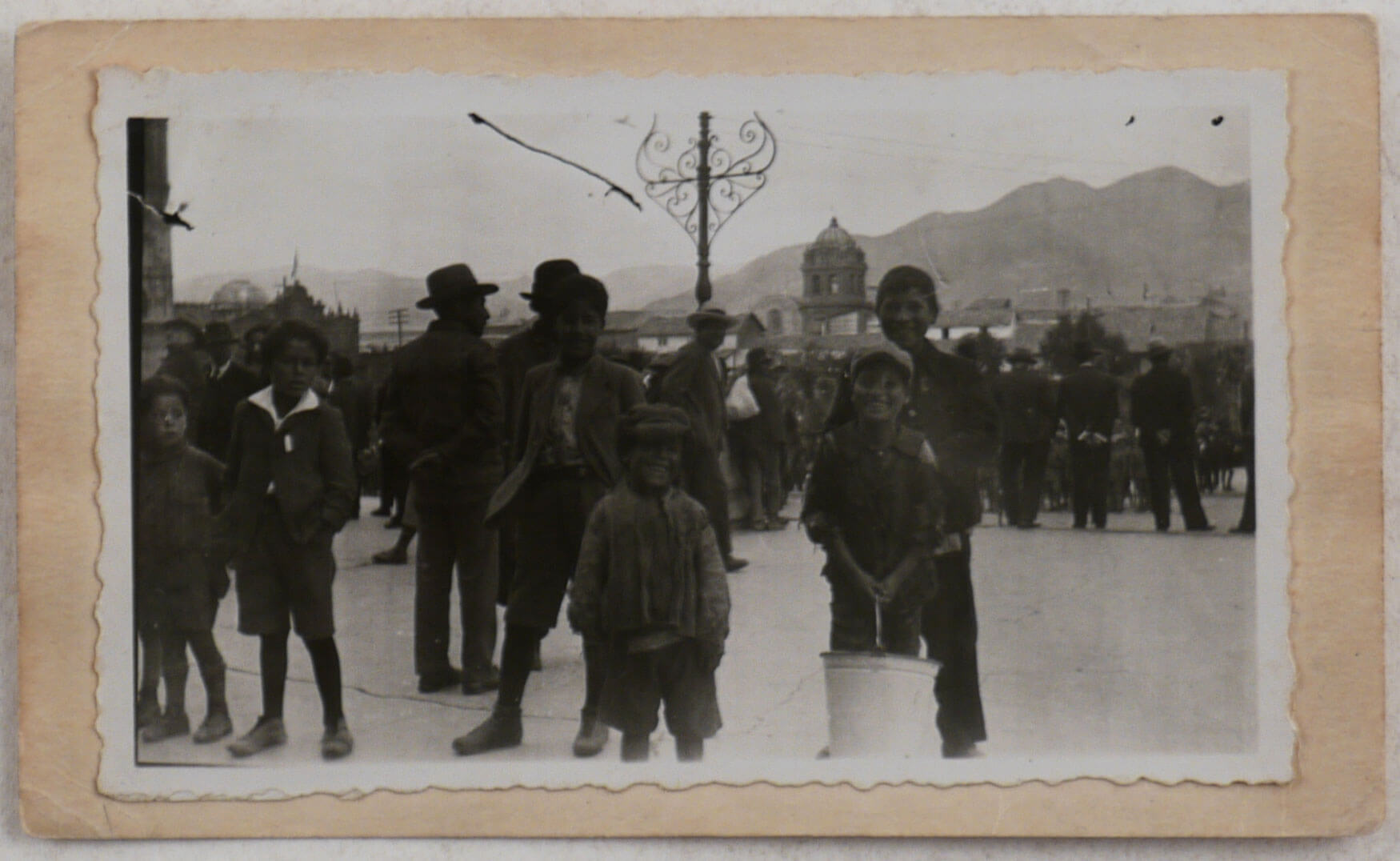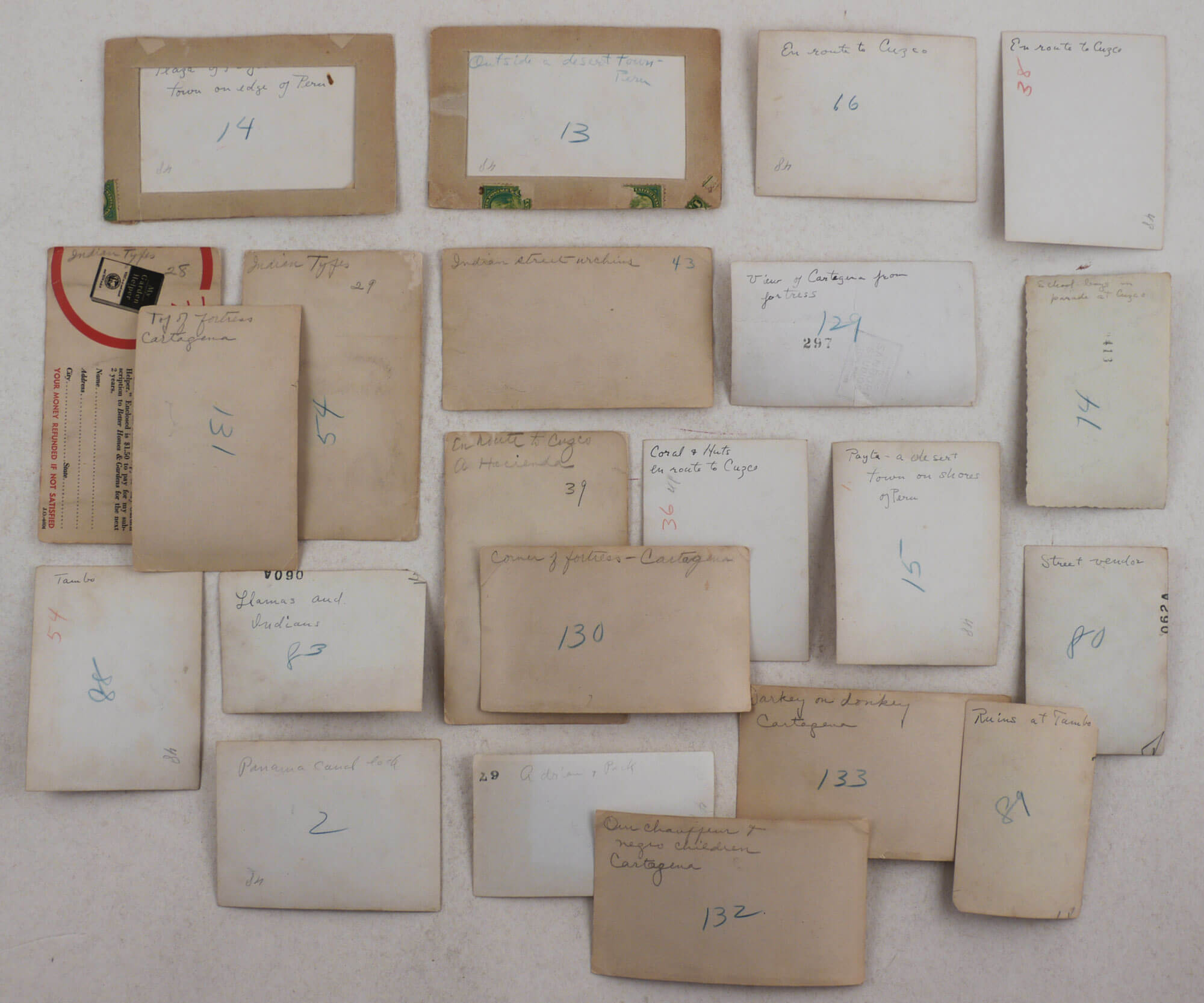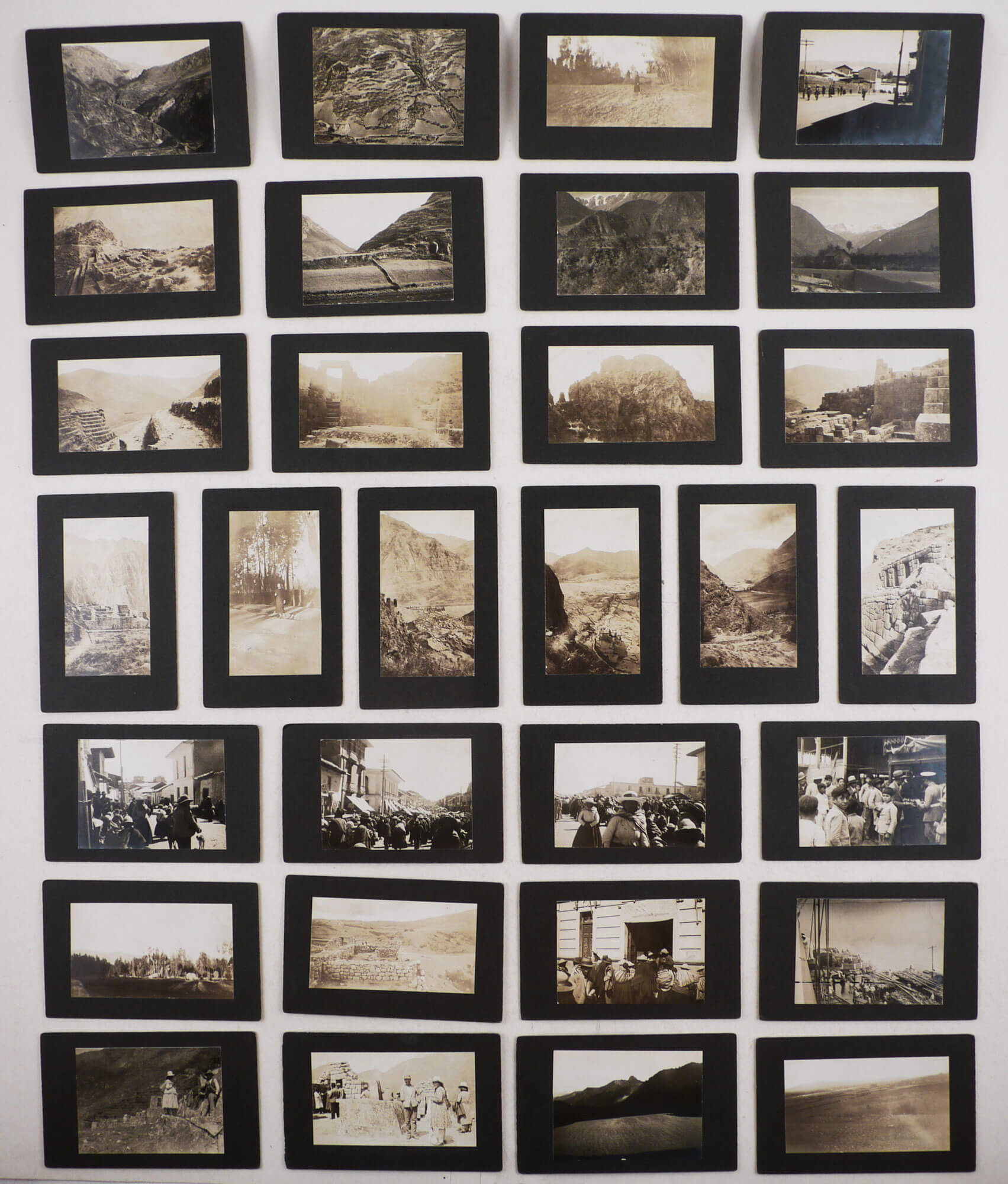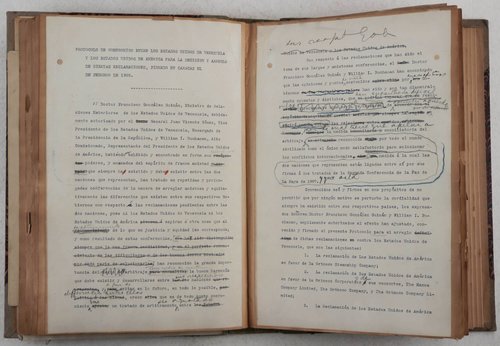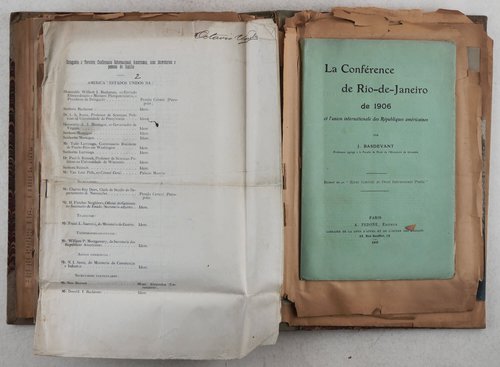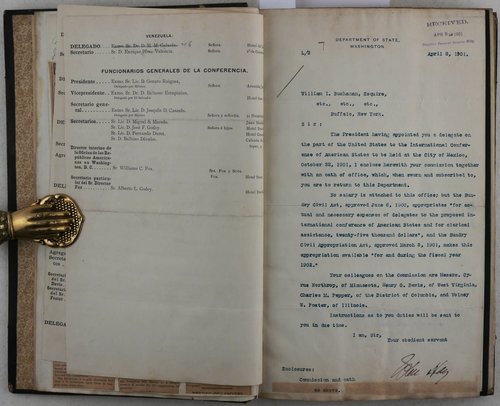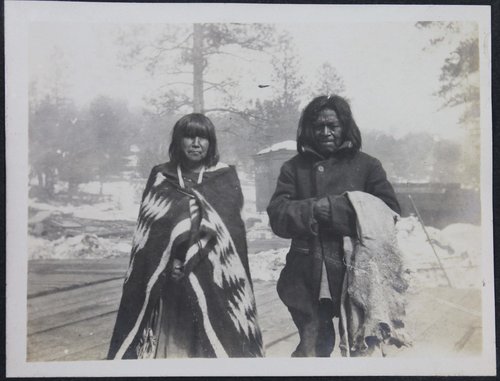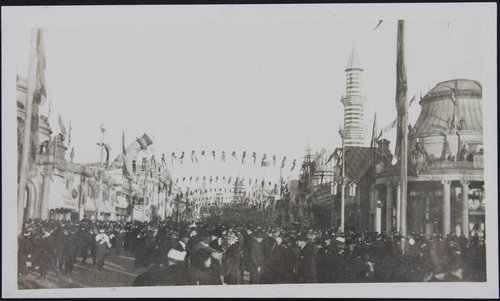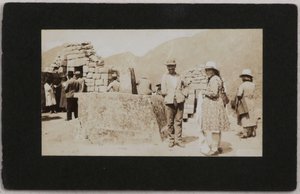
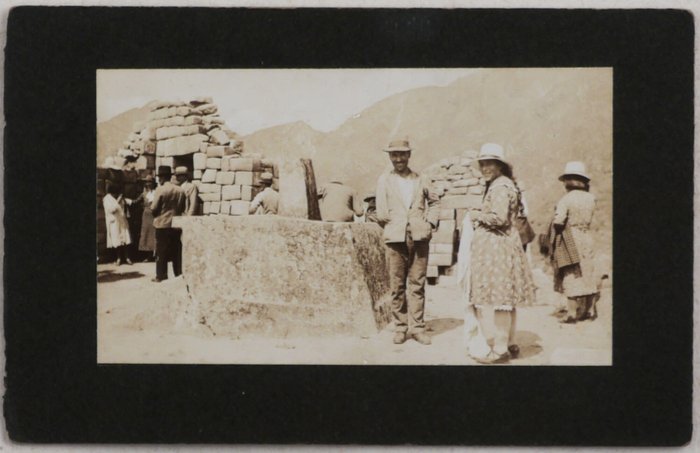
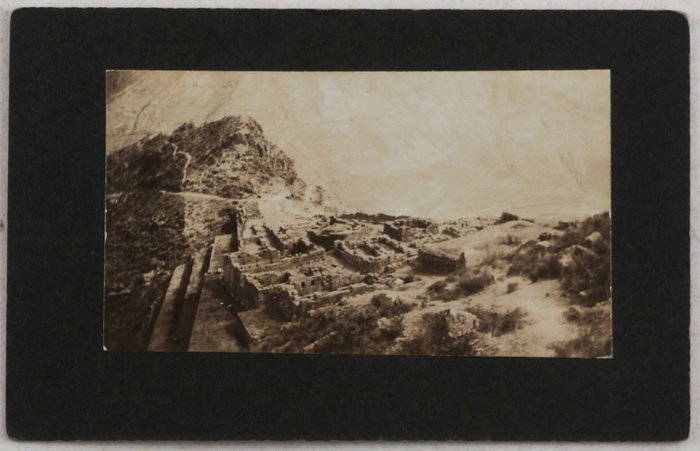
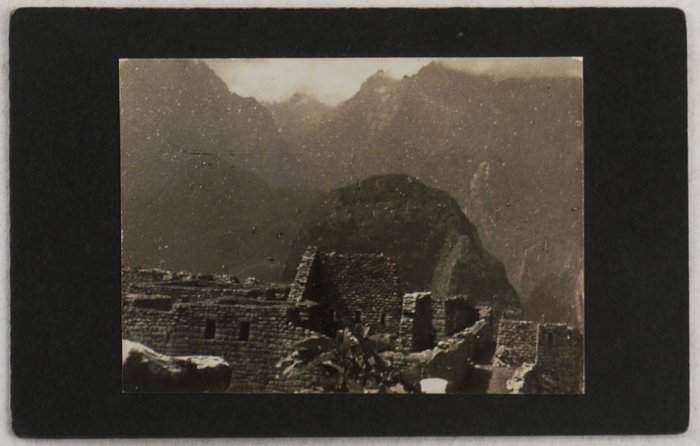
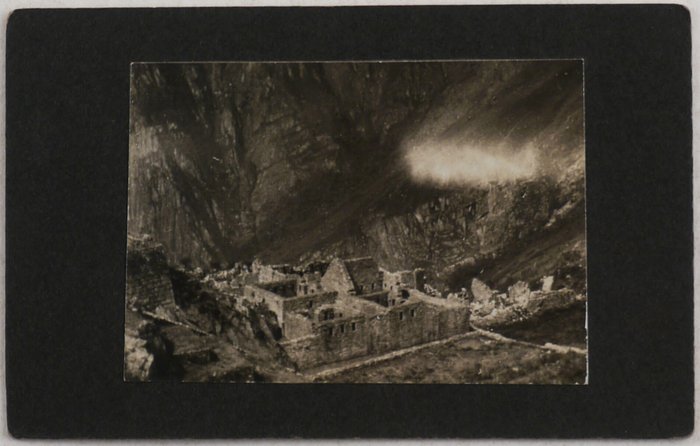
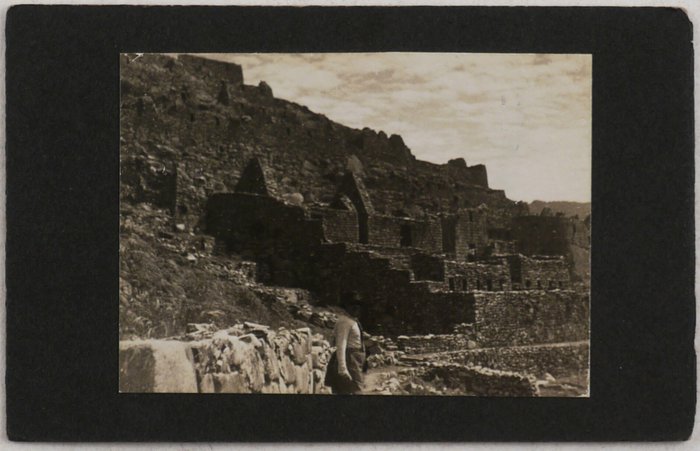
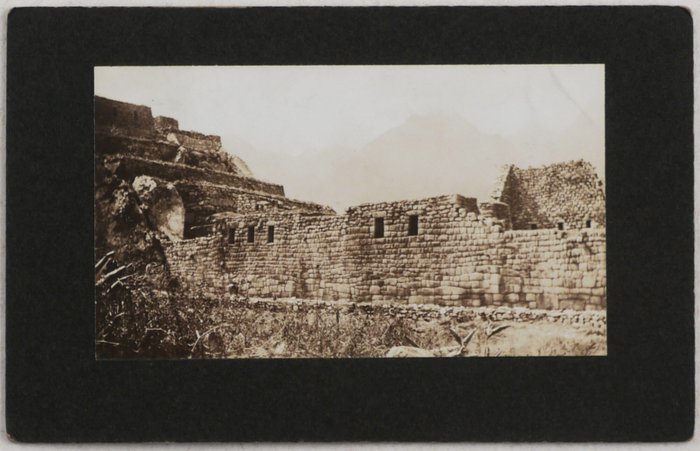
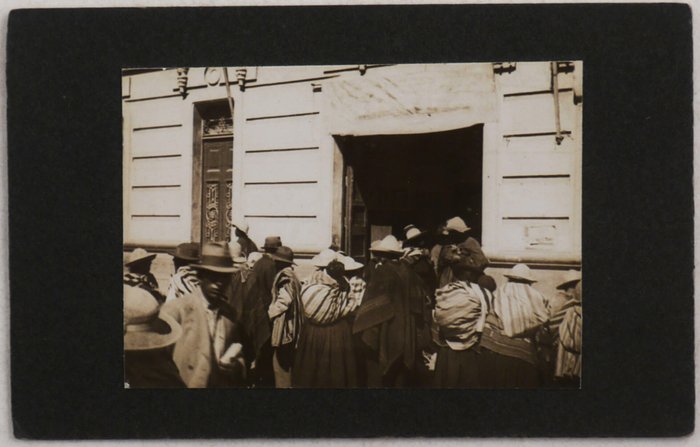

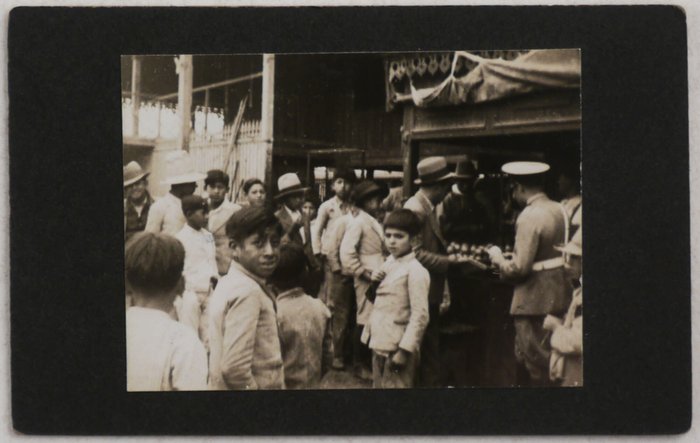
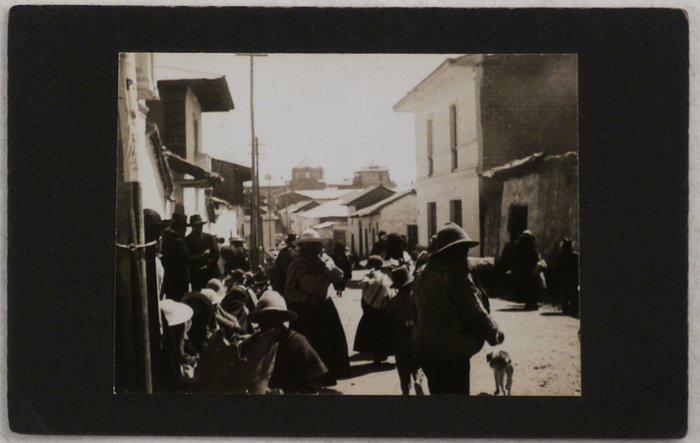
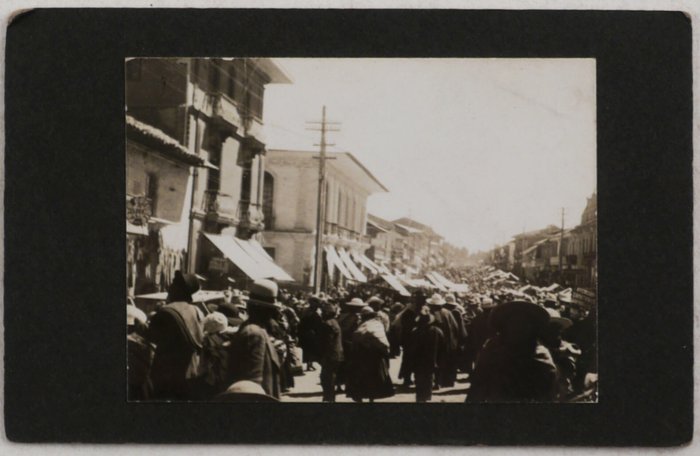
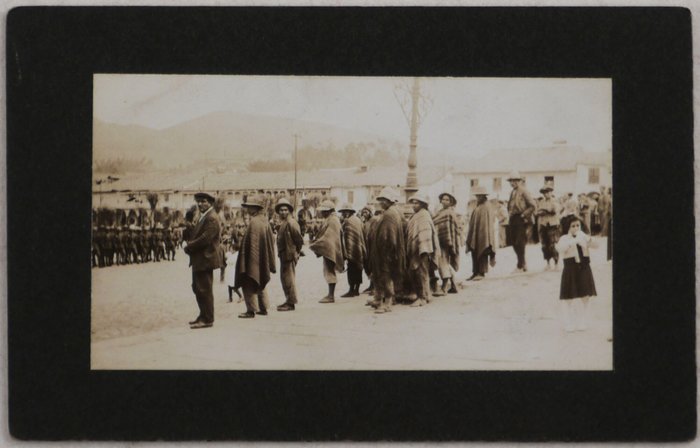
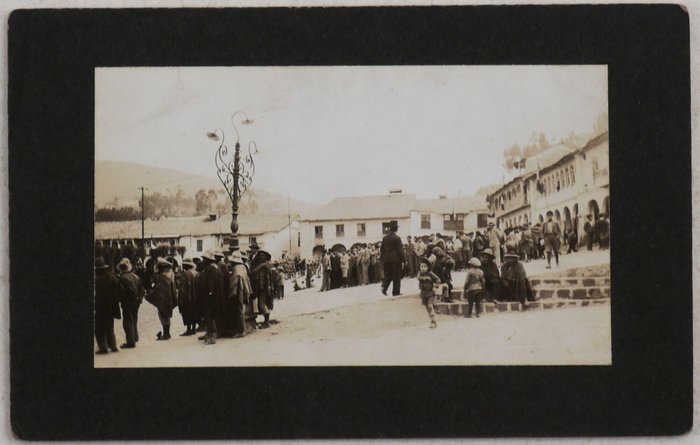
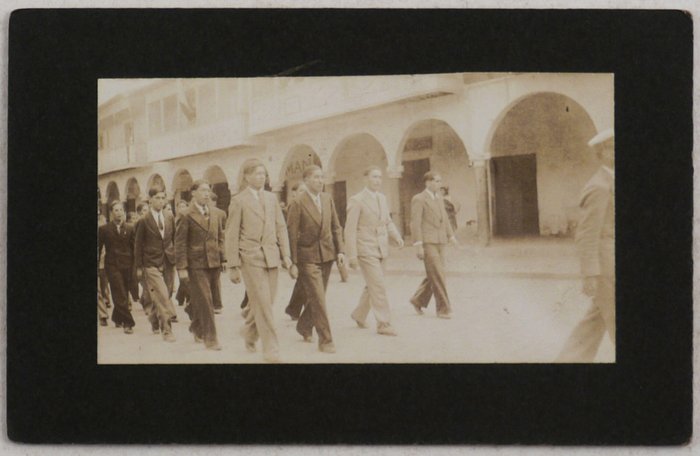
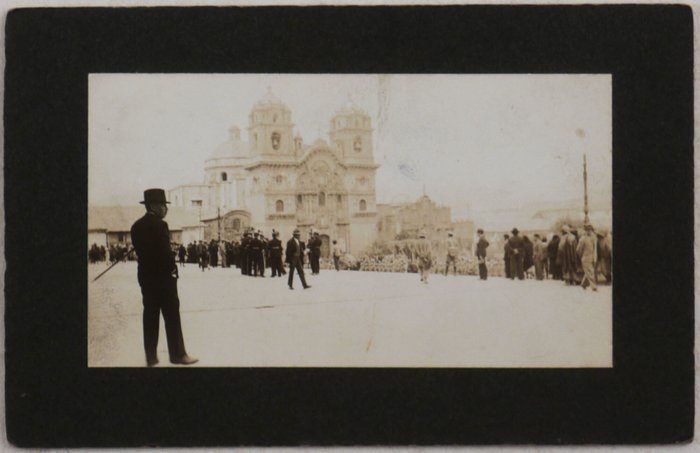

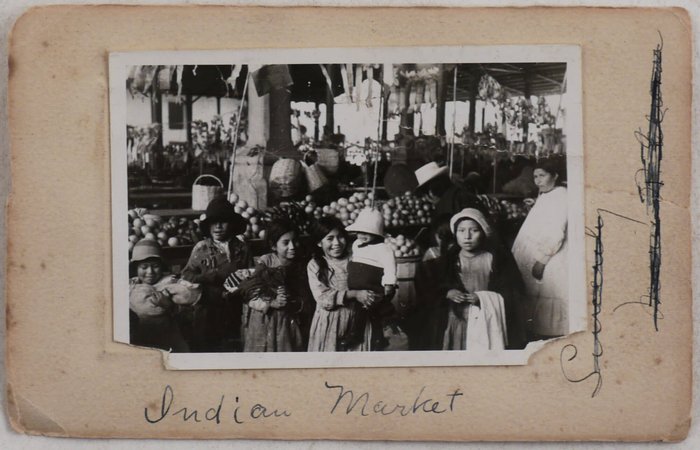
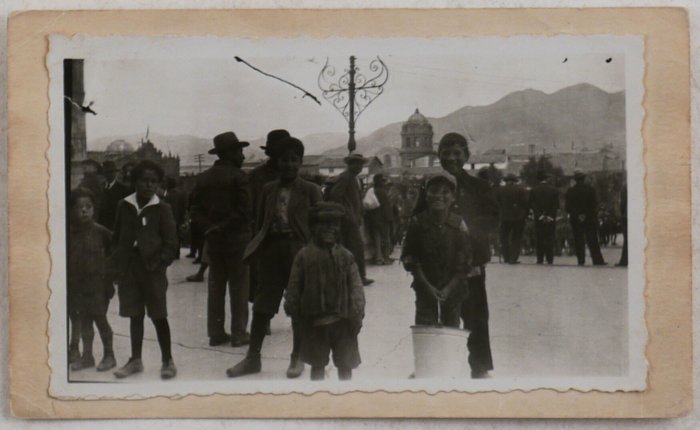
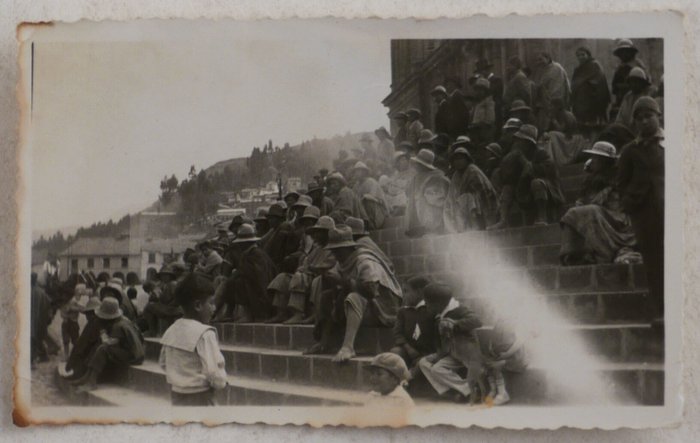
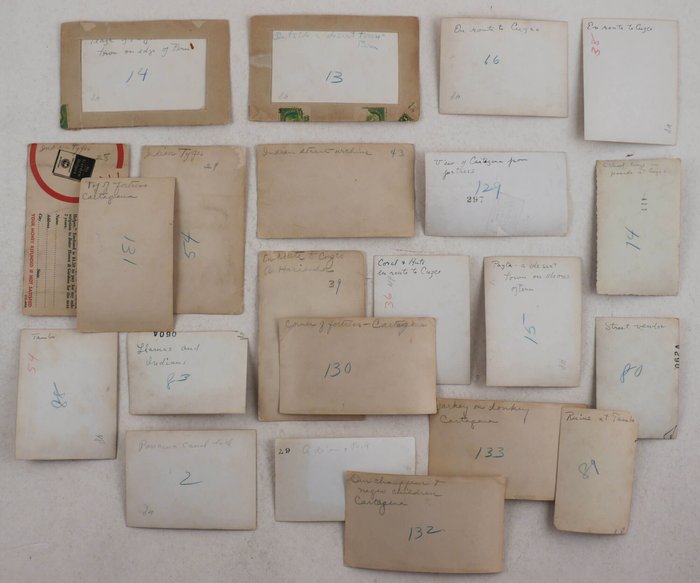
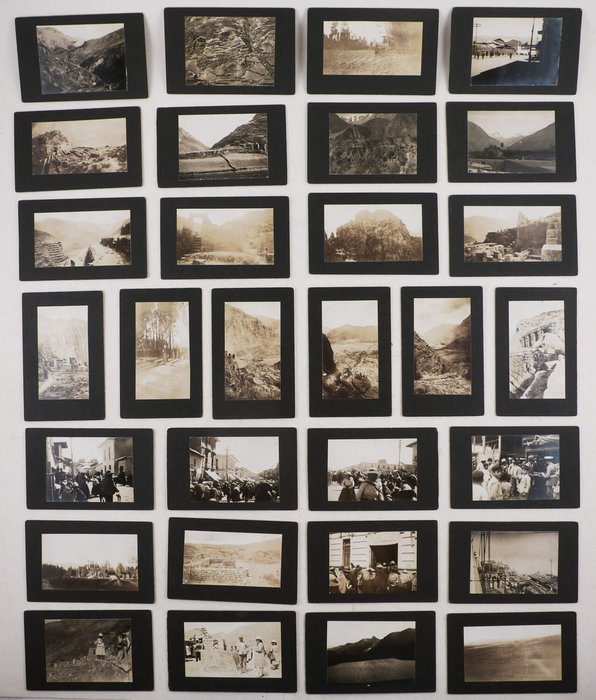
#PB50
Ca. 1920s
79 gelatin silver photos from ca. 7,5x10 cm (3x4 in) to ca. 6,5x9,5 cm (2 ½ x 3 ¾ in). 48 images are mounted on dark grey card ca. 9x14 cm (3 ½ x 5 ½ in); thirteen are mounted on creamy card or thick paper from ca. 8,5x14 cm (3 ½ x 5 ¾ in) to ca. 7,5x12,5 cm (3x5 in). All but four photos with period pencil or ink captions on recto or verso. Several unmounted photos with minor creases, several creamy mounts with creases and minor tears on extremities, several images slightly faded, but overall a very good collection of rare early photos.
Historically significant archive of early original gelatin silver vernacular photographs of ruins of the famous Inca citadel of Machu Picchu and the Inca complex at Pisac (north-east of Cuzco), taken in the 1920s by American travellers, most likely archaeologists. The photos date back to the first decade after the rediscovery of Machu Picchu by Yale professor Hiram Bingham in 1911 (the site was rediscovered in 1902 by Agustin Lizarraga, but it was Bingham who brought Machu Picchu to international attention and undertook its major clearing and excavation). The images feature several Americans, who possibly came for the archaeological research as tourism had not yet been developed in the area around Cusco and the Sacred Valley at the time. Twelve photos of Machu Picchu include general views of the complex taken from above, and close-up pictures of the city walls, terraces and stairways (still with visible vegetation), and distinctive Inca stone houses with gable ends. Two photos of the living quarters feature the summit of the Putucusi Mountain; another image shows a wall of snugly fitting granite blocks. There is also a scene with a Peruvian couple posing next to the “sundial” (Intihuatana ritual stone); the ruins of a wall in the background of this photo still feature several rows of stones forming the roof gable – later and modern-day images of the same site reveal that the roof gable of that wall has been demolished. In this regard, photos from our collection are close to the ones taken by Hiram Bingham during his expeditions to Machu Picchu in 1911-1912 (Bingham, H. In the Wonderland of Peru: The Work Accomplihed by the Peruvian Expedition of 1912, under the auspices of Yale University and the National Geographic Society// The National Geographic Magazine. Vol. XXIV, No. 4, April 1913; see more).
A photo of a mountain stream, captioned “En route to Machu Picchu,” likely shows the Urubamba River.
Eight photos of the ruins of the Inca town of Pisac (“Pisaj”) northeast of Cuzco include excellent views of the Sacred Valley and the Vilcanota River taken from above, terraced hill slopes, the Inca complex, stone walls, an archway and “top of mountain.” There are also three images of the ruins of an Inca “Tambo” (a road post) and of an Inca compound ([“Quinque?”]).
The other photos include a series of images of Cusco and its environs, including ten scenes from a parade, with marching soldiers, “students,” and “school boys” and a crowd of Peruvian spectators watching from the street or sitting on the steps of the Cusco Cathedral. The other photos of Cusco depict “Llamas by Sun Temple” and mountains, a hacienda and a “coral & huts” “en route to Cuzco.” Several other scenes “en route to Cuzco” were most likely taken from a train window.
Thirteen photos show the city of Huancayo in the central highlands of Peru (street and market scenes with local sellers, passers-by and children, a farm and “eucalyptus trees,” mountains, terraces and plateau en route, “train route up to Huancayo”). There are also views of the “train route up to Huancayo,” Paita - “a desert town on shores of Peru,” portraits of Peruvian marker sellers, Llama herdsmen, mothers with babies, children at an “Indian market,” &c. The collection also includes photos of Cartagena (parts of Castillo San Felipe de Barajas, a panorama taken from the fortress, portraits of “our chauffeur” and local children, &c.), “Panama canal lock,” a scene of “loading bananas – Guayaquil” (the visible sign on the barge in the left reads “Bananera”), &c.
Overall an important collection of rare early original gelatin silver vernacular photos of the Inca ruins in the Sacred Valley of Peru, taken not long after Machu Picchu’s rediscovery in the 1910s.

